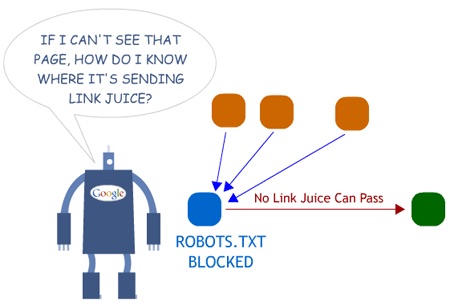9 SEO tips to optimize your website in 2019
Let’s kick off the year with 9 SEO tips to carry out on your website. These are 9 important SEO tips that will optimize your website and therefore are important to put in place so that you can start the new year with a bang 💥.
1. Get thinking Mobile First
Hey Google, wuu2 2day?
I think I can say for everyone that Mobile First is now well and truly planted into our minds since Google decided to prioritize mobile indexing back in March last year. The famous search engine now indexes websites based on their mobile versions due to the increased use of smartphones for internet searching. If you’re not thinking Mobile First when you’re wanting to optimize your website then you’ll potentially see a drop in your Google rankings if for example factors such as the loading time and images aren’t optimized. I put this SEO tip as number one because of its huge importance for Google.
Here are just some of the advantages of Mobile First:
- Potential of more reach
- Builds-up your credibility
- Provides a brilliant user experience
A Mobile First site is now as important as ever to optimize your website in order to please Google and provide a great user experience for searchers.
REMEMBER
- A mobile version of your site is the starting point for what Google includes in its index
- Make sure it has optimal loading time and all images are optimized
- A Mobile first can provide more reach and increase your credibility
2. Speed up the page’s loading time
1, 2, 3, zzzzz…

Right, SEO tip number 2 to optimize your website! No one likes slow loading websites, not me, you, your neighbor or Google, and with mobile indexing now in full force it’s now important as ever to optimize your website page loading times. According to Google, 53% of visits are abandoned if a mobile website takes longer than 3 seconds to load…and that my friend could be a huge blow to your potential conversions. Abandoned visits means a poor user experience and so a fast site is essential in having the best chance of converting your visitors. Plus, page speed is a ranking factor so it not only affects your conversions but also your SEO.
So how can you speed up your pages loading times, here are a few SEO tips that you can put in place:
-
Minimize the weight of any multimedia
High resolution images are heavy and take longer to process so by reducing the resolution, you’ll quicken up the page loading time. -
Enable browser caching
Caching is temporarily storing data on a visitor’s computer so that when they revisit a website they don’t have to download the same things again and wait it for it to load. -
Reduce HTTPs requests
A visitor requests certain files when they visit your site. Too many of these files (HTML, CSS, Javascript) means more requests and a slower website. -
Optimize your CSS
CSS files help with the layout of your site and so it’s important to optimize these files (by deleting unnecessary code) to improve your page speed.
These are just a few SEO tips to put in place and there are many more that will help you achieve that 3 seconds loading time. Ask yourself this, would you wait around for a site to load when there are 10 other options to choose from? 🤔
REMEMBER
- Make sure a landing page loads in less than 3 seconds
- A slow site will damage your conversion rate
- Optimize your page speed by reducing image weight, HTTP requests, enabling caching and optimizing your CSS
3. Add the all-important micro-data
Little things make big things happen.
One SEO tip that may be more well-known for the technical SEO’ers out there but easy to understand for the marketers  . Microdata are labels that tell search engines what each page element is, for example it’s like saying ‘Hey Google this text is the author’s name and this text is the author’s bio’.
. Microdata are labels that tell search engines what each page element is, for example it’s like saying ‘Hey Google this text is the author’s name and this text is the author’s bio’.
Adding microdata makes it easier for the search engine robots to crawl your site and therefore better understand all the different elements in it, thus helping the robots to create a better experience for searchers. Microdata is a bit like labelling your boxes when you’re moving house, you’re telling the removal men exactly which box belongs to which room making a lot simpler for everyone involved in the process. Microdata can be added to various elements such as:
- images
- author names
- business address
- page title
- date published
So think about adding it to different elements within your site because if you optimize your site, you make Google’s life easier and it’ll make it easier for searchers to find you.
REMEMBER
- Microdata tells search engines what each page element is (e.g. This text is the author’s name)
- It makes it easier for the search engine robots to crawl your website
- Microdata can be added to images, author names, business address, date published
4. Create a sitemap & robot.txt files
The power is in your hands.
A sitemap is another essential SEO tip for your website optimization because it allows the search engine robots to navigate your website and point internet searchers in the right direction. They act as a way to communicate with search engines on parts of your website that the robots can go onto to crawl. However if there are areas of your site that you don’t want the robots to crawl or index then you’ll need to add the Robot.txt files. You can also use this functionality to tell Google what pages you want them to crawl or index giving you the upper-hand over what Google is allowed to see. Adding the Robot.txt gives your most valuable content a better chance of being visible because you’re specifically telling the crawl robots to go to that page.

REMEMBER
- A sitemap allows the search engines crawlers to interpret your website
- Creating Robot.txt files lets you decide which pages should be indexed or skipped
- Robot.txt files give your most valuable content a better chance of being visible
5. Produce high-quality content
Why give the crown to anyone else?
Content is King. This is by now a well-known fact but one to remember. Producing quality content on your website is vital for internet users to find you, and so it’s important you have a content strategy put in place, so this means well-chosen keywords and the type of content you want to publish. This could be through a blog, product pages or tool feature pages. Your content needs to be unique, engaging and effective in getting visitors to stay and (fingers crossed) buy from your site. Think about what would make you click on your website link in the search engines and apply this to your strategy. Content that is engaging leads to shares which in turn can make your website become more popular.
My SEO tip is to have at least 400 words per page of content so that you can effectively optimize your keywords for the best ranking in the search engines.
REMEMBER
- Your content needs to be unique, engaging and effective
- Engaging content leads to shares which in turn increases your popularity
- Write a minimum of 400 keywords per page of content
6. Reassure visitors by using HTTPS
Let your visitors put their trust in you.
Remember that HTTPs stands for Hyper Text Transfer Protocol Secure, a security feature that shows that a website is protected by a secure socket layer technology. Put in simpler terms HTTPS is a security measure put in place on websites to send and receive private data or information. For example personal and financial details that you don’t want to be stolen by others.
In terms of how this can help with how to optimize your website, having a secure site will put you in Google’s good books. It will also slightly boost your rankings and, provide security and privacy for your visitors and yourself. It protects payment details, tampering from third parties and provides a secure experience for your website visitors.
REMEMBER
- This security feature shows a website is protected by a secure socket layer technology
- A HTTPS reassures users that their personal and financial details cannot be stolen
- It will boost your rankings and provider a safer experience for your visitors
7. Get rid of poor backlinks & duplicate content
Spring clean your website.
Backlinks can be great to refer qualified traffic to your website and the emphasis is on this word ‘qualified’. Qualified backlinks are those from related and trusted sources. For example, let’s say your website offers a computer software, a backlink from a software magazine would be a good link. However if it was a backlink from a celebrity news website then this will flag-up as something fishy by the search engines. Spammy backlinks can cause harm to your domain and the longer you let spammy links be created, the harder it will be to get rid of them. Google wants to see your website with quality links so that it can reward you with higher search rankings.
Identical or very similar content is also a massive no no. If there are several URLs all containing the same content, search engines won’t know which URL to show in the search results and could end up showing the duplicate version of the original piece of content. This is why it’s SOOOOO important to create unique and original content on your site, so that the original content creator gets their deserved credit. To check if your site has any duplicate content, CocoScan will be able to help you out  .
.

REMEMBER
- A bad backlink comes from unrelated or untrusted sources
- Google prefers quality over quantity
- Duplicate content confuses search engines, they don’t know which URL to show in the search results
- It’s important to create unique and original content
8. Become socially savvy
Share me! Share me! Share me!
You want the world to see your content and to show Google how popular your website is, well it’s time to put in place actions so that your website visitors can interact and engage with your site content. My advice is to place social media share buttons on the pages that you want people to share. An example could be your on the pages of your blog articles, share buttons incite readers to promote your content on their accounts thus reaching a wider audience through your readers! If your website content has a high level of social activity, this shows Google that your site is popular, interesting and providing something of value to internet users. Google likes rewarding popular sites with increased ranking in the search results page. It’s something small to add but something that could really help get your brand name out there.
REMEMBER
- Place social media share buttons on your pages with shareable content
- High levels of social activity shows Google that you’re popular, engaging and valuable
9. Adapt your site to your visitor’s needs
They should be on your mind 24/7.
Final SEO tip here, well done guys for sticking with me to the end 💪🏼! Your website visitors are those who are going to determine whether your site is worth sticking around for or not. Just like when you search online you look for easy-to-navigate websites and so this shouldn’t change when you’re creating or updating your own site.
You need to guess what sort of terms searchers will use for your industry and make sure your website responds with the answer they’re looking for. This even means creating specific landing pages for different search terms. For example you’re an ecommerce store selling garden furniture. If searchers are looking for wooden benches, rather than direct them to your homepage in the SERP, direct the searchers to a specific landing page for benches. This quickens up their research and answers their request effectively.
REMEMBER
- Visitors look for easy-to-navigate websites
- Think about what your users will search for
Conclusion
And voila! 9 SEO tips to optimize your website to help you rank better in the search engines. These SEO tips all require time and perseverance but if you plan out them out well, your website will be oh-so optimized.
